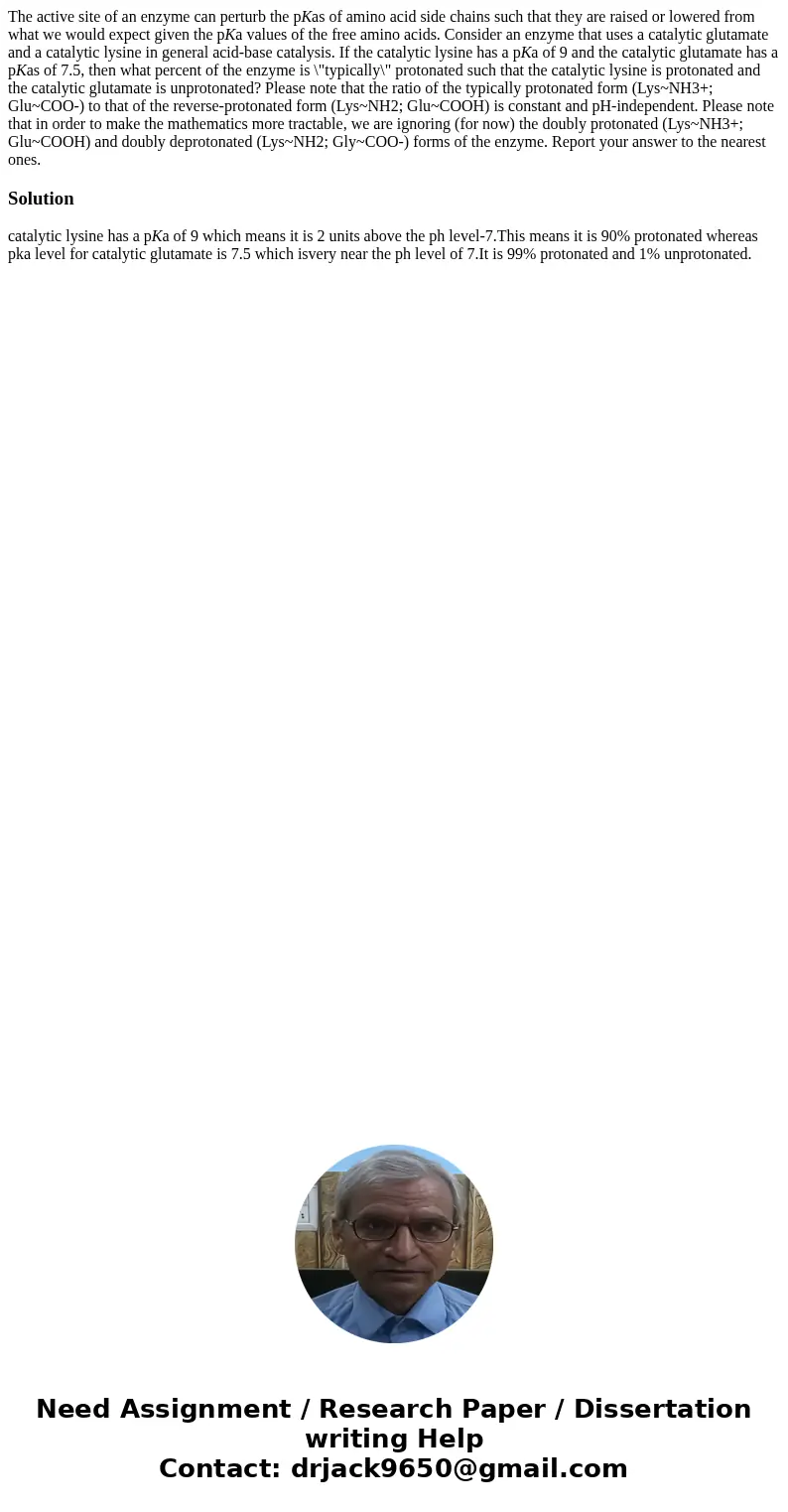The active site of an enzyme can perturb the pKas of amino a
The active site of an enzyme can perturb the pKas of amino acid side chains such that they are raised or lowered from what we would expect given the pKa values of the free amino acids. Consider an enzyme that uses a catalytic glutamate and a catalytic lysine in general acid-base catalysis. If the catalytic lysine has a pKa of 9 and the catalytic glutamate has a pKas of 7.5, then what percent of the enzyme is \"typically\" protonated such that the catalytic lysine is protonated and the catalytic glutamate is unprotonated? Please note that the ratio of the typically protonated form (Lys~NH3+; Glu~COO-) to that of the reverse-protonated form (Lys~NH2; Glu~COOH) is constant and pH-independent. Please note that in order to make the mathematics more tractable, we are ignoring (for now) the doubly protonated (Lys~NH3+; Glu~COOH) and doubly deprotonated (Lys~NH2; Gly~COO-) forms of the enzyme. Report your answer to the nearest ones.
Solution
catalytic lysine has a pKa of 9 which means it is 2 units above the ph level-7.This means it is 90% protonated whereas pka level for catalytic glutamate is 7.5 which isvery near the ph level of 7.It is 99% protonated and 1% unprotonated.

 Homework Sourse
Homework Sourse